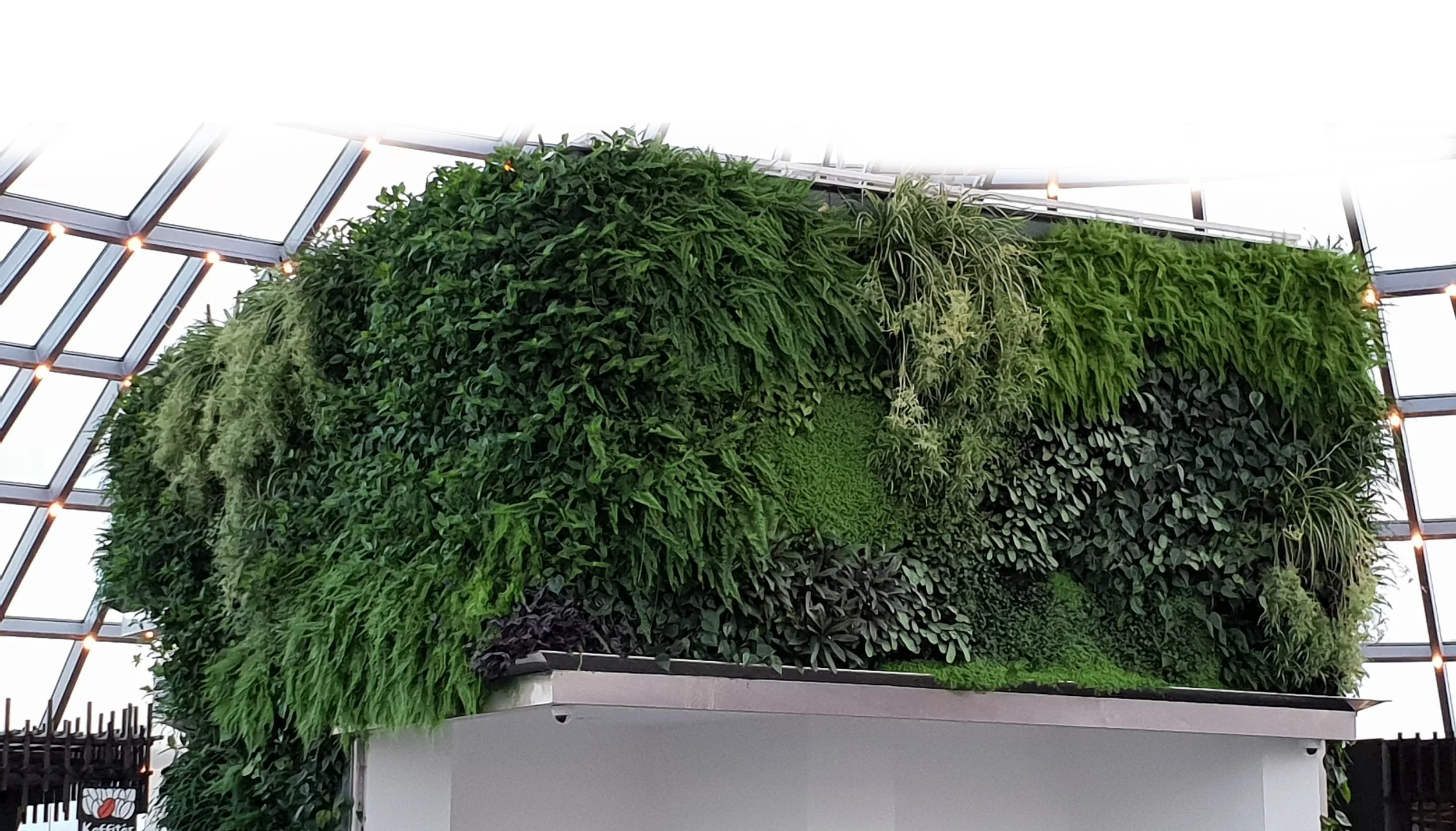
Vertical Gardening
Systems
Architectural Greening Methods
-
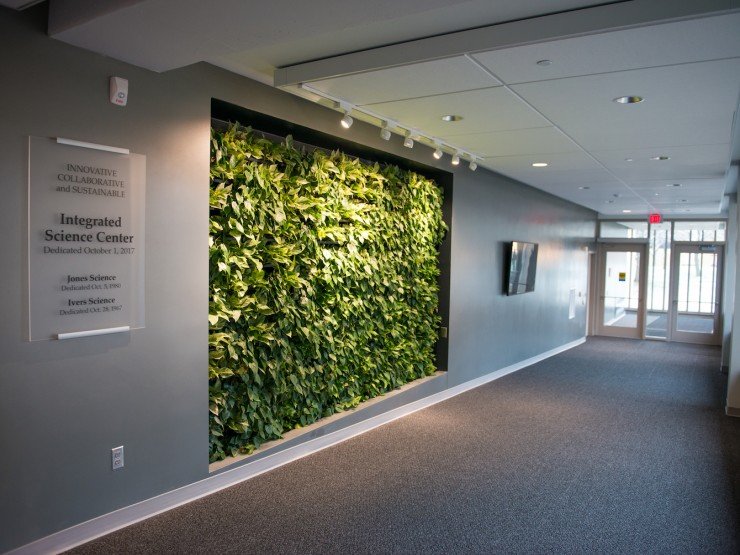
Interior Live Plant Walls
An indoor living wall, also known as a green wall, is a vertical garden that is designed to grow plants on a wall or other vertical surface indoors. Living walls can be designed in various sizes, shapes, and styles and can incorporate a range of plant species, including herbs, ferns, succulents, and flowering plants. Living walls are typically constructed with a support structure, such as a metal frame or modular panel system, that provides a growing medium and irrigation system for the plants.
-

Moss Walls
A moss wall is a type of indoor green wall or vertical garden that is made up of preserved moss or living moss. Preserved moss is typically used in most moss walls as it requires little to no maintenance and does not need sunlight or watering. The moss is mounted onto a panel or frame and can be designed in a variety of patterns or shapes to create a unique and visually stunning display. Some moss walls also include other natural elements, such as branches, leaves, or rocks, to create a more natural and textured look
-
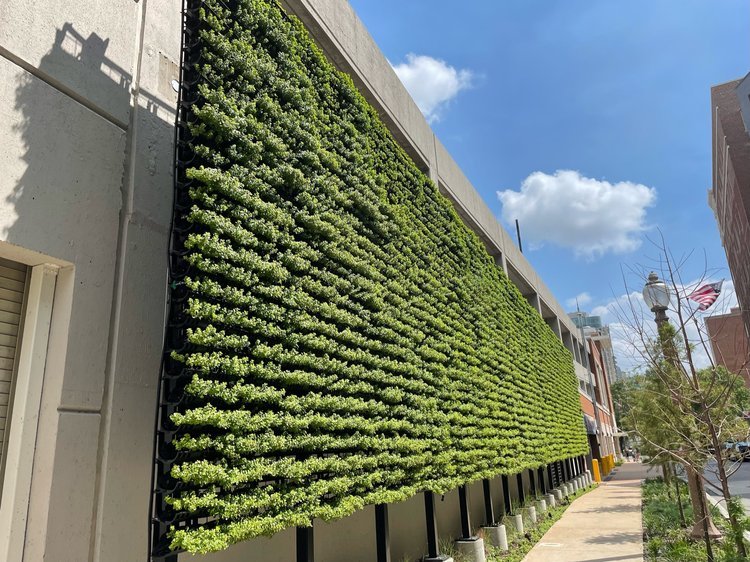
Exterior Green Walls
An exterior living wall is a type of vertical garden that is installed on the exterior of a building, typically on the building's façade or an exterior wall. Unlike replica façade greening, exterior living walls use living plants that are rooted in soil or a soil-like growing medium and are irrigated with water. The plants used in an exterior living wall are typically selected for their ability to tolerate the specific growing conditions of the wall, such as the amount of sunlight and exposure to wind and rain. The living wall is typically designed as a modular system with individual panels that can be attached to the building's wall, and the panels contain built-in irrigation systems to deliver water and nutrients to the plants.
-

Living Retaining Walls
A retaining wall that is also a vertical garden is a type of landscape architecture design that incorporates both a structural retaining wall and a vertical garden. The retaining wall is designed to hold back soil and prevent erosion, while the vertical garden component is added for aesthetic or ecological purposes. Typically, the wall is constructed with a modular panel system that includes planting pockets for a variety of plant species.
-

Green Screening
A Greenscreen that supports vines is a type of trellis or mesh system that is used to support climbing plants, such as vines or ivy, on a building or other structure. The green screen is typically made up of a wire or plastic mesh that is attached to a frame or structure that is fixed to the building or wall. The plants are trained to grow up the mesh by attaching themselves to it with tendrils or by wrapping around the wire.
-
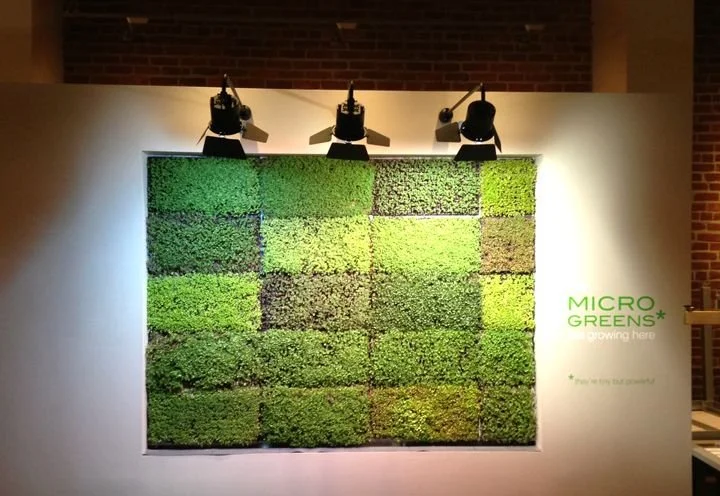
Micro Green Vertical Gardening
Microgreen vertical farming is a type of indoor farming that involves growing microgreens (young vegetable or herb plants) in a vertical structure. In this farming method, multiple layers of trays, shelves, or vertical substrates are used to maximize space and grow as many microgreens as possible in a small area. The trays, vertical substrate, or shelves can be arranged in a vertical tower or a rack, with each level equipped with lighting and irrigation systems.
-
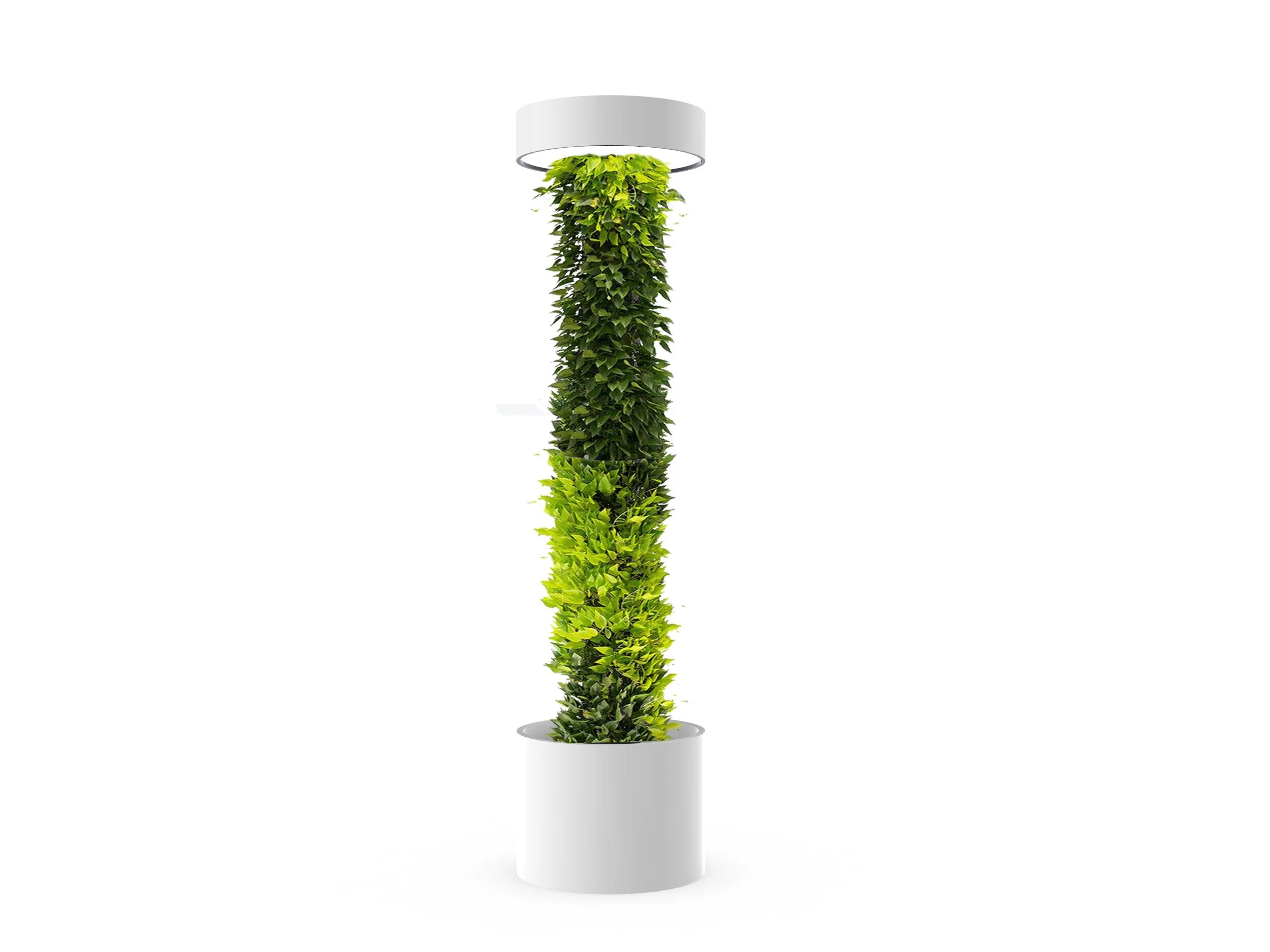
Air Filtering Vertical Garden Tower
Biofiltration is a method of purifying air or water using living organisms, such as plants or bacteria. In vertical gardening, biofiltration can be used to improve air quality and remove harmful pollutants. The plants take up some of the pollutants through their roots, further reducing the concentration of pollutants in the air.
-

Replica Class A Fire Rated Green Wall
A replica plant green wall is a type of vertical garden that uses artificial or fake plants to create the appearance of a living green wall. These walls are often used in indoor spaces where live plants may be difficult to maintain or where there is limited natural light. A replica plant green wall that meets Class A fire code means that the wall has been designed and constructed with materials that meet or exceed the fire safety standards set by the National Fire Protection Association (NFPA) for Class A fire ratings.
-
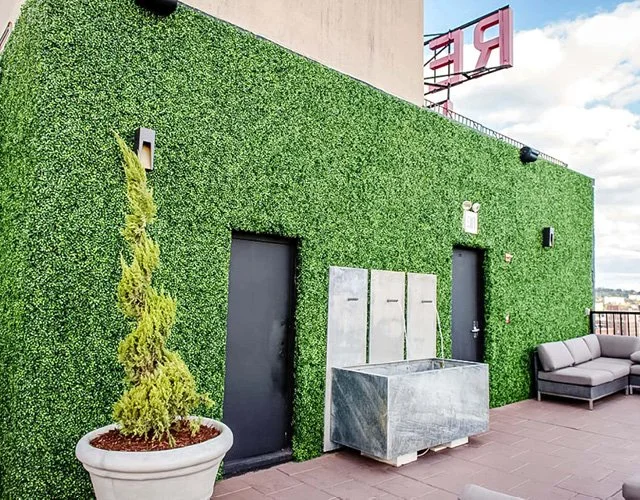
Replica Façade and Exterior Greening
Replica façade greening is a type of vertical gardening that involves using artificial or fake plants to create a green façade on the exterior of a building. The artificial plants are designed to mimic the appearance of live plants, and they are typically attached to a support structure or mesh that is fixed to the building's façade. The fake plants used in replica façade greening can be made from a variety of materials, including plastic, fabric, or silk, and are often designed to be UV-resistant and weatherproof to withstand outdoor conditions.
Green Walls in Schools Grant Program
In collaboration with our partner non-profit organization, Project Sustainability, we bring green walls into the classrooms. Our impact to bring nature into the classroom has inspired work in all parts of the United States, East Africa, South Africa, Central Europe, China, Japan, and SE Asia.


